
We are harnessing the power of our data
“Our customers take a shower, and they don’t say, ‘thank you, Watercare’,” says Rebecca Chenery. “The water is just there for them, and that is the way it should be. They should not have to think about it.”
“But if they hop in the shower and the water is not there, they will think of us, and will probably be cross with us,” says Chenery.
“Wouldn’t it be good if we were able to say, via a text message, that the water is out and will be back at 7 am?”
At the moment, she says, the organisation is more reactive in dealing with these types of situations.
But Chenery says this will change as Watercare looks at a raft of technologies to improve their engagement with their customers.
“We want to interact with you in a manner that is contextual and personalised,” says Chenery.
For instance, she says, “If we know you drive a certain route to work every morning and there is a water line break that can affect traffic, we can text you an alternative route.”
She says this is just one way Watercare is looking at ways to create business value from their voluminous data.
“We are harnessing the power of our data to be predictive, and anticipate before it happens. That is about unlocking the masses of the data we have.”
“We are data rich across our operations, across our technologies,” says Chenery, referring to the organisation’s vast resources that include a network of water pipes, water treatment plants and reservoirs.
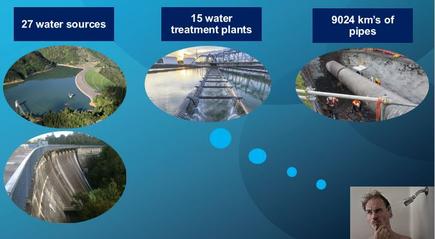
Chenery is chief digital officer at Watercare, and looking at the range of technology and digital tools to enhance the customer experience is just a part of her broad responsibilities at the Auckland Council-owned organisation.
Watercare is New Zealand’s largest company in the water and wastewater industry, supplying around 360 million litres of water to Auckland every day.
The making of the CDO
Chenery became its first chief digital officer just before the end of 2017.
As CDO, she leads Watercare’s multi-year Strategic Transformation Programme (STP).
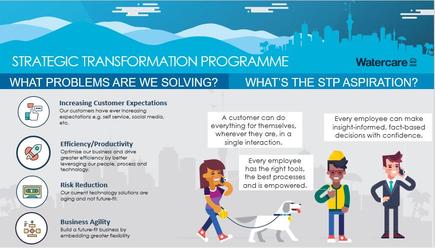
She explains how she stepped up to this multifaceted role.
In her previous role, she led the organisational effort to drive Watercare “into the new world” and “a new digital evolution” for their customers.
“That business transformation programme scaled and has really taken off,” she says.
In the process, they noted the gaps, or barriers, to further success.
“We were finding we were still running IT as a subservient support function rather than an enabling function,” she says. “On one hand, we talk about future focus, on the other hand, we have the ‘department of computers and phones’.”
She says consequently their CEO Raveen Jaduram relooked at the operating model for the business.
“If this was our vision for the future, what are the capabilities in our business people, process and technologies? How do we want to source the technologies? How do we measure ourselves?,” she says.
That exercise led to a structural change.
“We have a strong technical foundation and infrastructure,” she says. “These assets are critically important.”
At the same time, they were thinking of the relevance of Internet of Things and AI to the business.
“You can’t do that in isolation, and so the digital function was formed out of bringing those two things together.”
In her current role, she leads all of the technology including the traditional ERP, corporate systems, networks, anything that is ‘as a service’, operating technologies and radio communications.
The ongoing transformation goes beyond the technology and digital teams, she explains.
Chenery explains while STP covers her division, it is also across business programmes.
She says there are three “value streams” of their work - customer and billing, operations and maintenance, planning and construction.
Each stream has an executive owner who is responsible for setting the vision within the value stream and prioritising the work and therefore, owning the benefits realisation of the value stream.
Each value stream is composed of cross-functional squads whose members come from technical, business and partner organisations.
The value streams are supported by the STP Programme director, Paul de Quaasteniet and his team, who take care of architecture, analytics, governance, change management, and embedding new ways of working in the delivery teams.
“Historically, we worked in our business functions which are often like-minded cohorts where you don't necessarily get the benefit of diversity of thought because you are in a group of people in a functional alignment,” she says.
“They tend to kind of think the same way. We see the benefits of people with different thinking styles coming together to solve problems.”
She observes that business leaders have a sense of ownership of projects in the way they work with squads.
“Instead of people standing back and saying, I want you to do this for me, and you go away, and you need to deliver it to me, they are invested in that they are working with the teams to deliver a business outcome.
“We are just seeing the breaking down of office silos.”

Change agent
Chenery joined Watercare eight years ago, coming from telecommunications and finance. At Watercare, her roles have included business transformation project manager, programme manager and strategic planning manager.
She has witnessed the changes at Watercare following the amalgamation of the Auckland Councils in 2010.
She says Watercare at that time had a wholesale business, with six wholesale customers, the Auckland, Manukau, Rodney, North Shore, Waitakere, Franklin and Papakura councils across the region.
When the Auckland Council was formed, the retail relationship came, she says.
“Everything was amalgamated into one system,” she says, and these included the retail billing and management systems as well as customer data and meter data.
“We extracted all of that data, brought it into a single system which was a significant piece of work,” she says. “Then we made a series of improvements over the coming years to standardise the billing cycle, and optimise things like meter reading.”
Emphasising the design element - not just agile - is really key
Watercare CEO Raveen Jaduram took over the role in late 2014, after 10 months as acting CEO.
One of his programmes was to hold roadshows, twice a year, in 10 different sites.
Chenery says he stands in front of the teams and talks to them about the organisation, where they are going, and what is topical.
He brings along a member of the executive team so there will be two of them speaking before the staff.
That was part of the transformation, she says, to hear directly from the chief executive about the change.
“That was a really visible sign for people that things are different, that he has a different style of leadership and it was okay to ask questions,” says Chenery, who has joined the CEO on the roadshows.
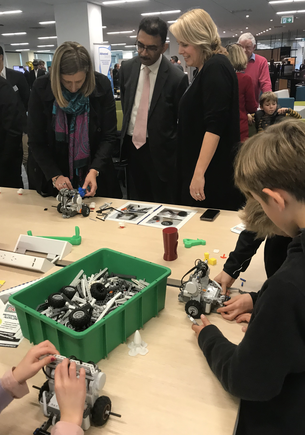
She says they hold a better business expo at the same time, so people can see what is going on in the business projects. These engagements have been well received, she says.
They also launched leadership programmes which focus on what good leadership looks like in Watercare and how they can build those leadership capabilities.
She says diversity is a focus of the leadership team. “We have an incredibly culturally diverse workforce,” she says.
She says on gender diversity, a third of the total workforce are females. She says women are about 50 per cent of their head office staff, but admits the percentage of women are small in the field staff.
Thus, Watercare has started a ‘Women in High Vis programmes’ to attract more women into the workplace.
She says some of the managers in their biggest plants are women, and the focus through the business is on building more of that capability, particularly on the service delivery side.
We have very capable women who were given the opportunity to excel at running the plants, she says.
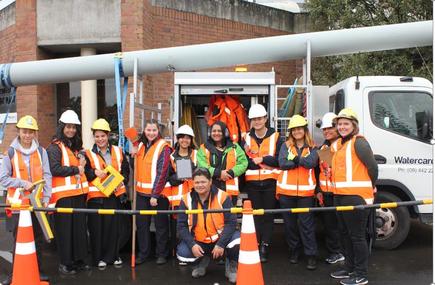
Chenery has a team of 80, and one of their goals is to provide a richer self-service and digitised experience for their customers.
Early this year, she says, they improved the digital experience for those reporting a fault.
“You can now report online, and also apply for a new connection online.”
She cites some simple, incremental changes that impacted the entire organisation.
One was changing the platform for the intranet. She says the previous internet was cumbersome and unwieldy.
“It was content heavy but you could not find anything. It was not maintained with information, and was not owned by anyone,” she says.
She says at the technology level, they created a new platform for the intranet. From the business ownership level, it is now the key channel from which they share information, connect with the rest of the business and reinforce core messages.
Co-bots
She says they are using robotic process automation for the likes of billing and accounts receivable, validating meter reading or what she calls “swivel chair business processes”.
She was conscious there was the fear of individuals whose roles are being impacted by the introduction of RPA.
“The first release of the bot was done in a way that allayed those fears, and helped people buy into owning it and freeing their capacities so they get better value add activities and better outcomes for our customers fast.”
“The bot was processing higher volumes, faster and more accurately than our human beings. Our customers get their bill faster and they don’t have delays because there is a billing exception.”
“We have been able to redirect their focus on other areas,” she says.
The change management system around the RPA process was so robust that when the bot went live, the staff named it, baked it a cake, and made it a birth certificate.

They talk about her as if she is a person and she is now a member of the team, says Chenery.
Chenery says even simple changes like putting the reception desk on the same floor as the offices has an impact on the way people work.
The reception used to be on the ground floor,” she says. “Someone had to collect guests to bring them up to the offices.”
We are seeing the breakdown of office silos
Behind the reception desk is a hub, where they can welcome visitors, and hold meetings, or do presentations.
“It is a space where people come together, eat lunch, and have a chance meeting,” she says.
“It is a multipurpose functional space.”
You may find someone near the coffee machine, and talk about a project you are working on. “This encourages collaboration and interaction.”
“Those interactions would not have had happened previously.”
The same space also provided the venue for Watercare’s first 'Digital Day', which was organised by her team.
It was open for everyone, and a number of their technology partners showcased some new technologies, says Chenery.
“We wanted to give people the chance to understand what is happening from a technology and innovation perspective,” she says. “They may have thought how much technology has changed their job or how it is helping to improve the business.”
“It was about [showing] the art of the possible in the hope that people will take that and think about what it means to them.”
She says among the most popular technologies on display were wearables for health and safety.
The staff had a chance to experience virtual reality, which brought them to areas that simulated the infrastructure around a construction site. Another VR programme let them design a house, or its layout.
Harriet, a 110-kilo, four feet and five inches tall robot, moved through a set path. The demonstration showed how the robot, with sensors on test for gas and various other things, can roam around a wastewater treatment plant and do more testings.

Chenery says the most popular session, however, involved not the “cool, experiential technologies” but a presentation by Frances Valintine on the future of work.
She says Valintine, founder of Tech Futures Lab, talked about the importance of continuous learning.
“It was really powerful for them to hear from her about the future of work and reinforce the requirement for individuals to keep ourselves relevant and get ourselves upskilled.”
“It really resonated with people,” she says.
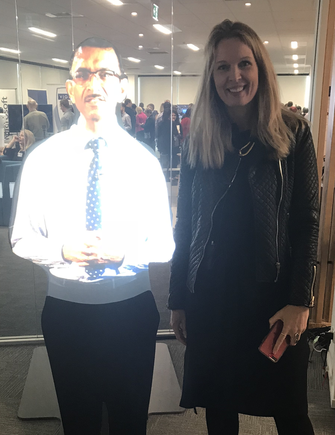
She says Watercare is helping their people retrain, upskill and utilise their skills in different ways.
“We see Watercare as an organisation that is continually learning and therefore our people need to be continually learning,” she says.
Beyond agile training
Around 25 per cent of the 800 employees of Watercare have now gone through a mixture of human-centred design thinking and new ways of working training (aka ‘agile’) and on-the-job coaching, says Peter Johnston, enterprise change lead for the Strategic Transformation Programme.
Johnston says the participants have come from across all areas of Watercare - operations, infrastructure, finance, human resources, communications, customer and digital.
“We have design and agile coaches embedded in our teams whose role is to impart new ‘digital’ and problem solving skills, get proficient in working in these new high performance, cross-functional teams, and become confident in delivering value early out into the business,” says Johnston.
“Emphasising the design element - not just agile - is really key.”
Chenery, meanwhile, says agile ‘gurus’ in her department are asked to train the other teams on running Kanban, squad and transparency around the work, as well as holding standup meetings.
“It is creating enough critical mass that it has created a language and commonality of understanding of the language used in agile,” she says.
“When we talk about a standup, a showcase or release, we have generated enough training and awareness that people are able to understand and discern what is relevant to them and apply it to their jobs.”
Chenery says when Watercare first started on their STP, they worked with IBM to support the design thinking process.
Now, they already have a group of people that they use to do these things and support the other business units when there is a desire to learn more about those practices.
The shift has also highlighted new roles, such as product owners and scrum masters, and less need for the traditional project manager role.
There is more need for a delivery lead who can apply agile work where appropriate and focus on outcome and value, she says.
An agile mindset is a number of things, she says. “It is an open mind, growing curiosity and a willingness to learn and explore and critique and apply critical thinking to a situation or a challenge.”
“You constantly ask why, why, why,” she says. Building a resilient team is also part of the transformation.
“When you are moving teams, it is about creating a level of resilience in people so they are actually happy to move around,” she says. “They are comfortable being uncomfortable.”
“Increasingly we live in a world where grey is the new black, so the level of certainty is lower than it has ever been and the level of ambiguity is higher.”
“So people have to be resilient to live in a world where they do not necessarily have all the 'knowns' and are comfortable being uncomfortable in that space.”
“Our job is very much in supporting them to get there, and helping them.
“What you need is the ability to apply judgement given what they know in any given situation.
“First, focus on people, getting our people to a space where they understood what we were trying to do, why we are trying to do it when we were doing it,” she says, on what worked for them.
“If we don't capture their hearts and minds, if they don’t feel a sense of ownership, if we haven’t taken them on that journey, we won't be successful.”
 Credit: Dreamstime
Credit: Dreamstime Future focus
A focus for Chenery and her team is this: “We need to understand what is happening on the horizon, what is the next innovation, and how it will affect our organisation?”
To do so, they are looking right across industries, apart from water and utilities.
“There is a huge application for AI in our business. What is happening with IoT? Smart metering? Health and safety?”
She says her team uses a mixture of agile and waterfall methodologies.
“What we are trying to build is an agile mindset. An agile mindset is always appropriate whether we use delivery of it by waterfall,” she says.
The agile mindset will ask: “What do I need to deliver? What is the most appropriate approach to achieve it? What are the risks? What is known, and unknown?”
What pleases her is how this mindset is “spreading amazingly” beyond her division.
Early this year, for instance, Watercare won in the successful procurement change category at the 2018 New Zealand Procurement Awards, held at EY.
The award cited how the procurement team led the uptake of agile methods across Watercare, having the organisation's first product owner and 'scrum master', and leading in the rollout of learning sessions and executive showcases.
“Our infrastructure teams are also looking at agile ways of working,” she says, on another division that is also moving into the agile path.
She says the Watercare staff realise some of the things they are doing are already aligned with this methodology. “They just did not give it a name.”
“The agile philosophy is growing organically across Watercare,” she says.
“We have not said, ‘use agile everywhere’.”
Their approach was: “Use agile ways of working where it is appropriate, and agile mindset through the rest of the business.”
Business transformation manager to chief digital officer: Rebecca Chenery talks about the new C-level role @Watercare #agile #AI @francesvnz #career #futureofwork #continuouslearning https://t.co/xoRNUsyMqb
— Divina Paredes (@divinap) August 21, 2018
Left field opportunities
Chenery says she did not have “a master plan at play” as she was building her career.
She just took opportunities as these came, even though some of these opportunities were “left field”.
Chenery has worked for the telecommunications industry before joining Watercare.
She was contracting at Watercare, managing board and governance processes.
“It was not something I had experience in or hard a particular aspiration to do,” at that time, she says.
But she knew she would learn all about governance that she can apply to any situation.
“It was pretty much a leap of faith,” she says, “but that opened up the opportunity to the business transformation role.”
In her current role, she says reporting to the chief executive officer is absolutely critical.
Previously, the technology leader at Watercare reported a layer down, the GM corporate services.
“We are committed to technology and people as true enablers to shift this business,” she says.
She says it is thus important to have a voice at the table.
“Reporting to the chief executive is absolute commitment to that.”

Get the latest on digital transformation: Sign up for CIO newsletters for regular updates on CIO news, career tips, views and events. Follow CIO New Zealand on Twitter:@cio_nz
Send news tips and comments to divina_paredes@idg.co.nz @divinap
Join the CIO New Zealand group on LinkedIn. The group is open to CIOs, IT Directors, COOs, CTOs and senior IT managers.
